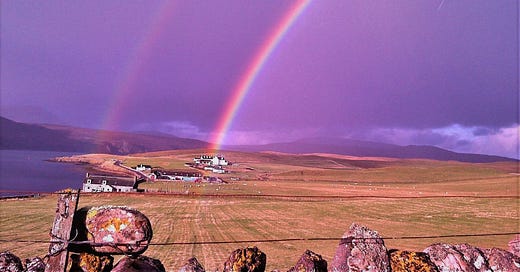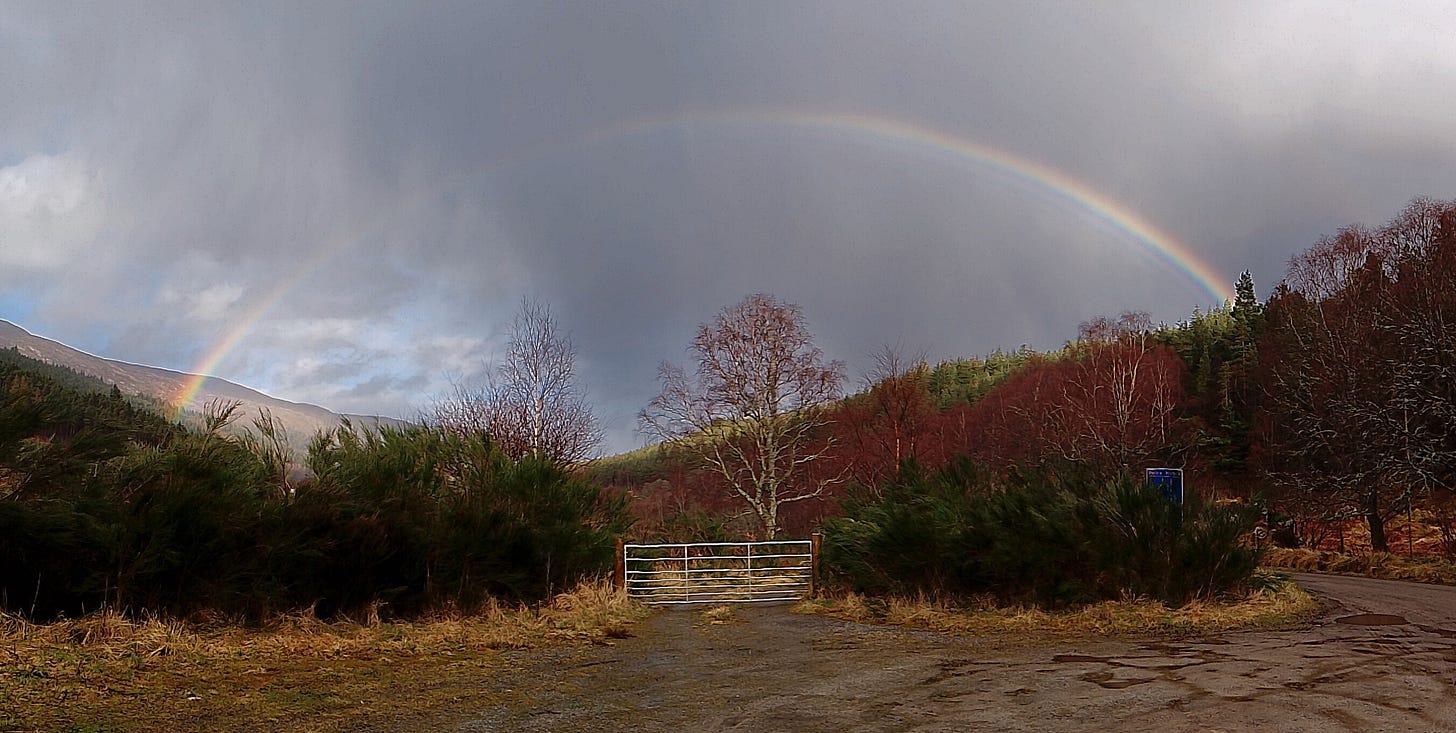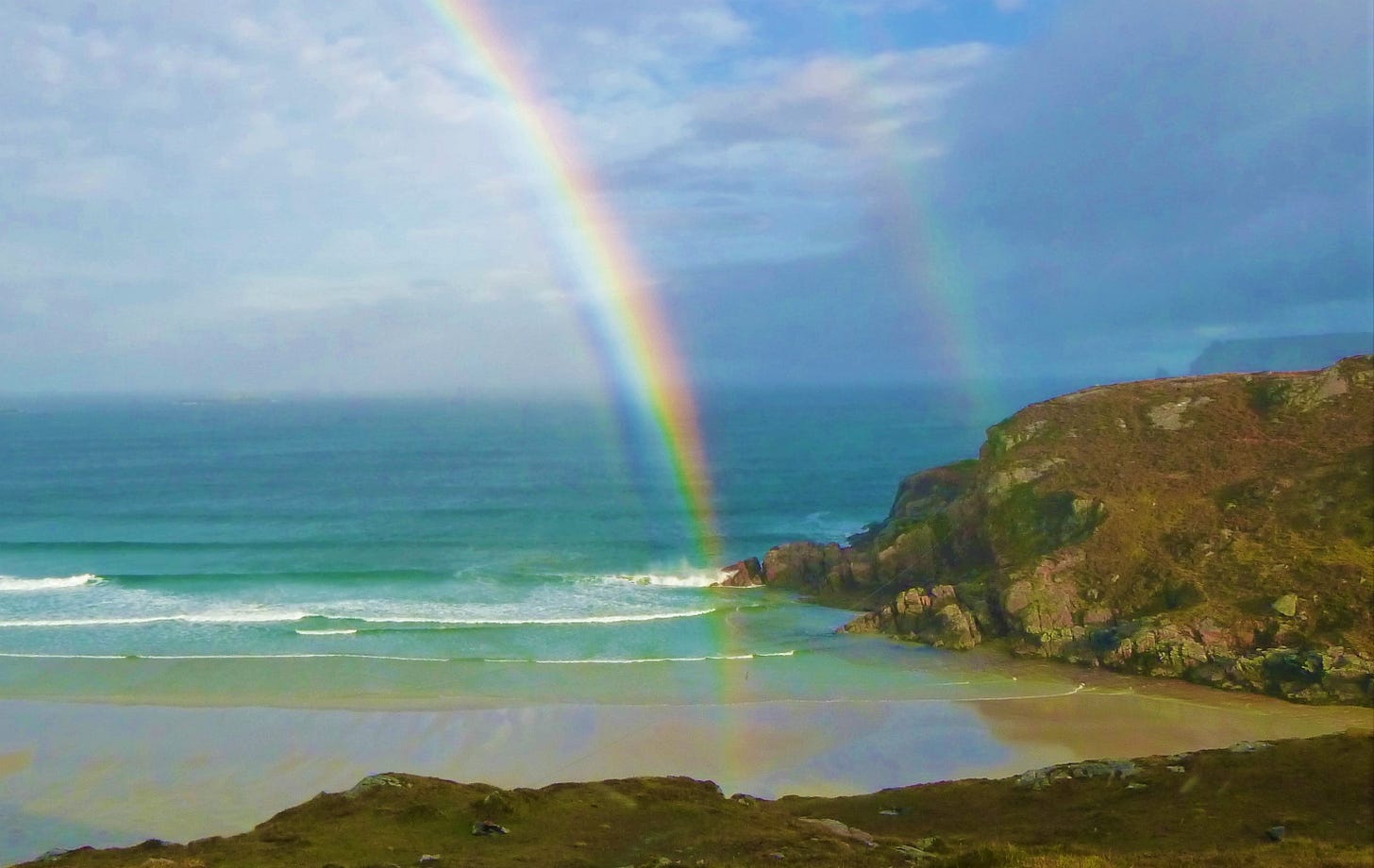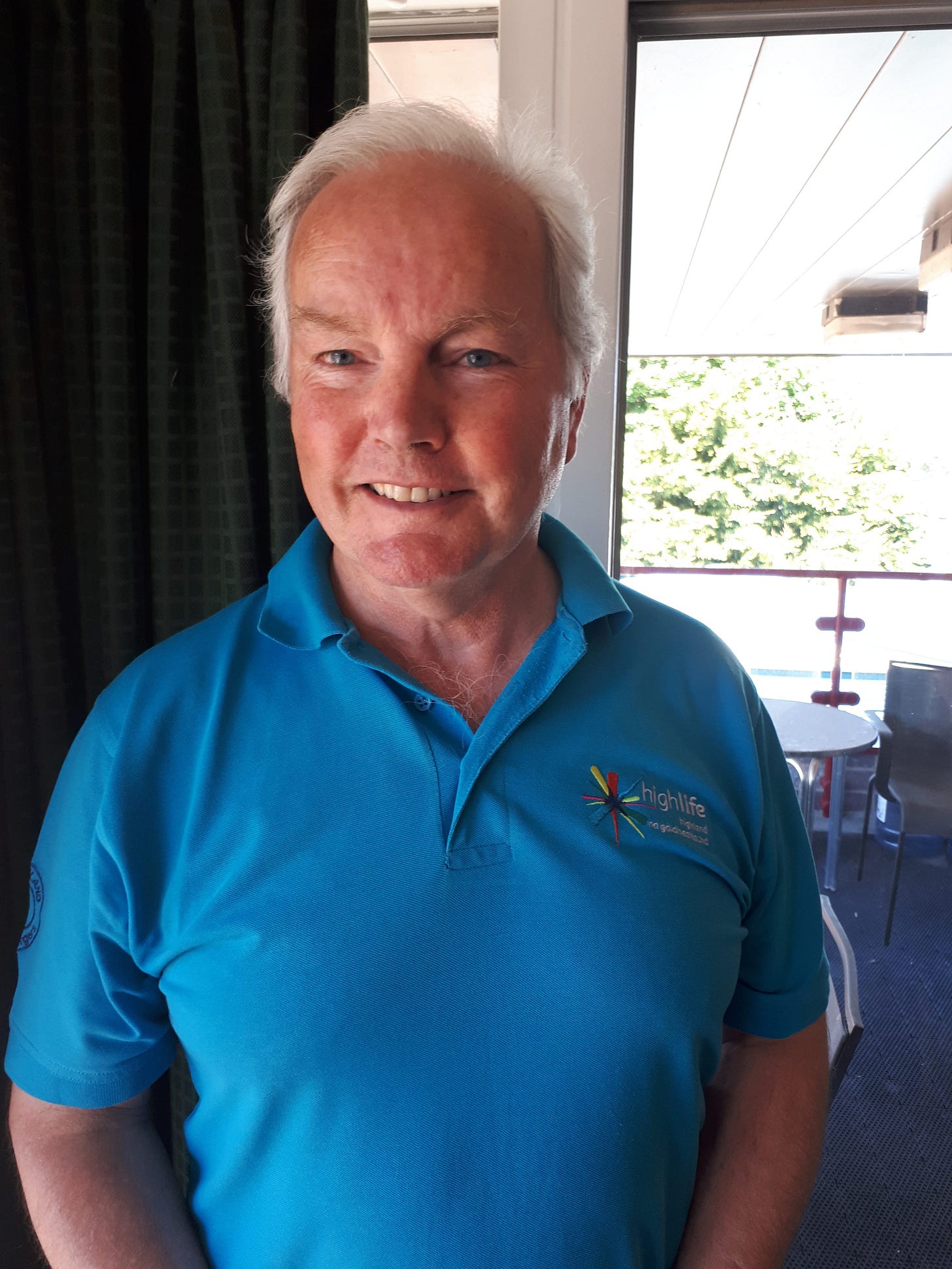My heart leaps up when I behold
A rainbow in the sky:
So was it when my life began;
So is it now I am a man;
William Wordsworth, [extract].
I have always treasured the sight of a rainbow, a rare vision in some countries but not so in Highlands, in fact this past 2024 “summer” had so many showers that rainbows were seen regularly. Double ones commonly, with added reflected partners on occasion, have been a delight.
The more extraordinary fact, concerning this remarkable vision of ethereal beauty, is that it does not really exist, a rainbow is not a thing. A rainbow is not three dimensional, it is not “over there”. This celestial arc is not a physical entity. Sitting in the sky in front of you with the sun shining from directly behind you, there are a myriad of light rays within our visible spectrum, travelling at different degrees, which your eyes perceive as a colour arc.
Everyone sees their own personal rainbow

The colours we see correspond to different wavelengths of light that the human eye can detect. Oddly, humans generally have only three colour receptor cones in our eyes, red, green and blue, how we see the full spectrum is a different discussion. The spectrum itself is continuous, meaning that there are a multitude of shades and variations within these seven colours.
Issac Newton first described five colours of the rainbow then added two more, this might have been more to do with the days of the week, or the number of planets noted at the time, it gave the rainbow even more mystical properties.
Simply put, the sun shines – light passes into the raindrops and gets reflected then refracted, the raindrop is spherical, the light passes at a forty-two-degree angle to the observer, forming a circle, the different wavelengths of light seemingly splitting to give us the rainbow effect, with red as the outmost ring.

Rainbows are circles, seen from the air it becomes a complete circle or ring of colour. What we usually perceive is half a rainbow, or less, depending on the height of the sun in the sky. This is the primary rainbow. The bigger the rainbow the lower the sun will be to the horizon. Think of the whole vision as a 3D colour cone with the fine point being the viewer’s eyes. The brighter or more vivid the colours the larger the raindrops are.
A secondary bow can often be seen outwith the primary. This appears if the sunlight is reflected twice in the droplets. These bows are fainter and the colour pattern is reversed. The sky between the two bows is noticeably darker, light which is reflected by raindrops in this area of the sky cannot reach the observer, it passes at a different angle, this is known as Alexander’s dark band. Conversely light below the primary bow is brighter due to the single reflection of rays seemingly within the bow, so the sky within does look lighter. The primary rainbow and the secondary are concentric sharing the antisolar point as the centre. Occasionally it is also possible to see other narrower fainter fringes of colour below the primary bow, these are supernumerary bows formed due to the droplets being quite small, sometimes reflecting purple, pink and green, adding extra layers of enchantment to this awe-inspiring phenomenon.
Newton was criticised by some for attempting to analyse the rainbow, to break it down into mathematical formulae, to understand it and demystify it. I believe that understanding the science makes it even more amazing, taking nothing from its magic.
Rainbows will always be remarkable and beautiful to me. We must keep our eyes and minds open to their wonder. Yet, perhaps their greatest lesson lies not in the rainbows fleeting beauty but in how it challenges our perception. A rainbow is not a physical object—it exists only because of the unique interaction between light, water, and the observer. It reminds us that much of what we experience is shaped by our perspective, a personal reality created by how we have adapted to see and interpret the world. Like Newton, lets ensure we appreciate and seek to understand it.
Donald Mitchell is a High Life Highland Countryside Ranger, a keen observer of nature and wildlife, he dedicates his time to documenting and sharing insights about the natural habitats in North West Sutherland. With a particular interest in marine life, he aims to help others gain a deeper understanding and respect for the delicate balance of our ecosystem.








Never seen so many rainbows until we moved to the Highlands! Yet another gift of living here.
Excellent article. We had a lovely rainbow in Edinburgh yesterday.